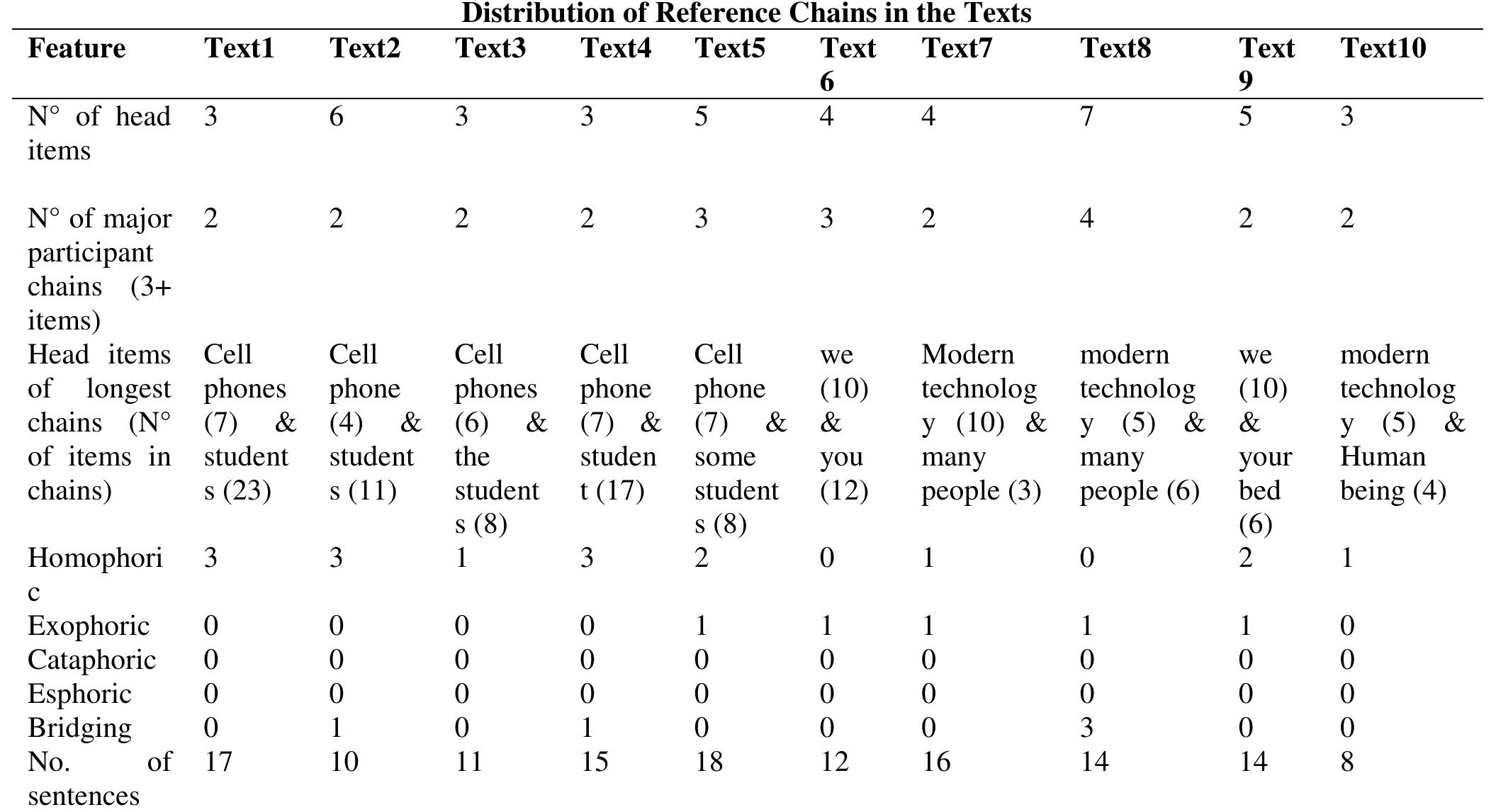Figure 2 – uploaded by Ayodele ALLAGBE

Table 2 Frequency Distribution of Reference Chains in the Texts Table 2 clearly shows that there is little or no major difference in the number of reference chains the ten texts under study contain. It also reveals that the texts contain 2 major participant chains including 3 or more items. Recall that Texts 1-5 (Set 1) were written on the same topic while Texts 6-10 (Set 2) on the same topic. As the analysis clearly reveals, the head items of longest chains in Set 1 are similar both in number and type. There are actually two head items in the longest chains: ‘Cell phones & students’ in Text 1, ‘Cell phone & students’ in Text 2, ‘Cell phones & the students’ in Text 3, ‘Cell phone & student’ in Text 4 and ‘Cell phone & some students’ in Text 5. These head items obviously seem to reflect the main focus of the students’ essay-writing question: ‘Students should be allowed to use cell phones in class. Do you agree or disagree?’ However, the head items structurally differ a bit in that while they are given in the plural form as the case is in Text 1, for instance, they are given in the singular form as the case is in Text 4, for example, or a combination of singular and plural forms as in Text 2. They also differ with regards to the number of times they occur in reference chains. Surprisingly, Text 1 which scored a lower mark compared to Text 4, for example, apparently seems to include the head item ‘Cell phones’ in the same number of chains (7 reference chains) as Text 4 does. But it seems to include the head item ‘students’ in a slightly greater number of reference chains (23 chains) compared to Text 4 still, which perceptibly includes it in 17 chains.

